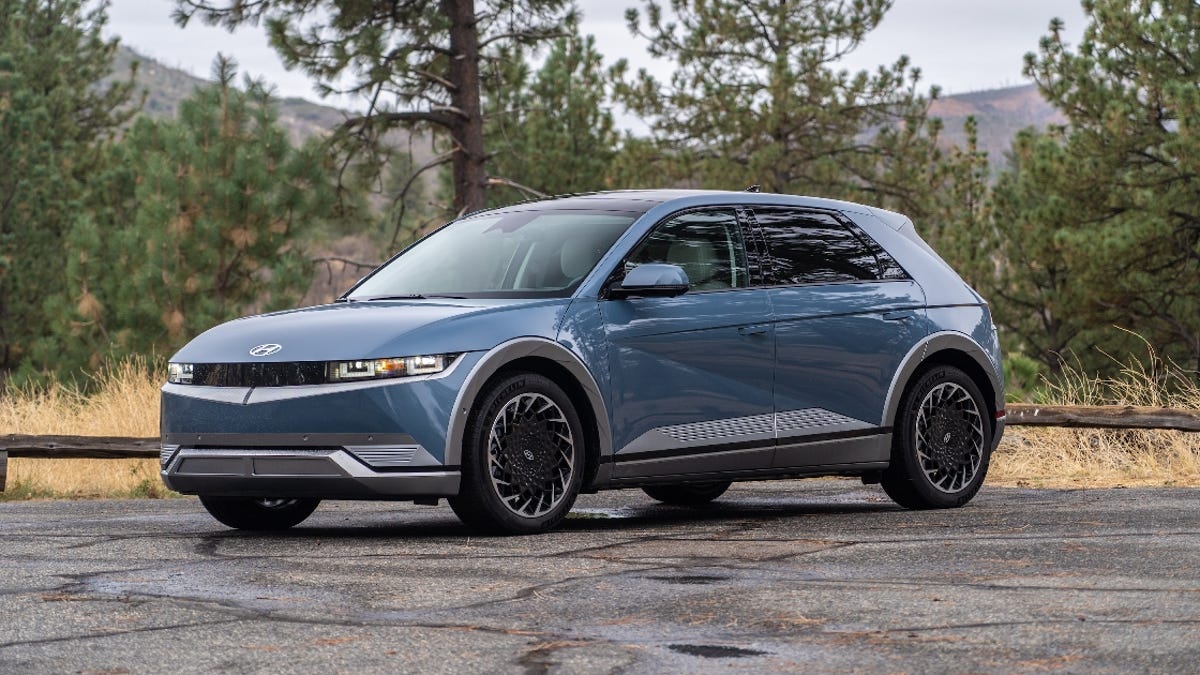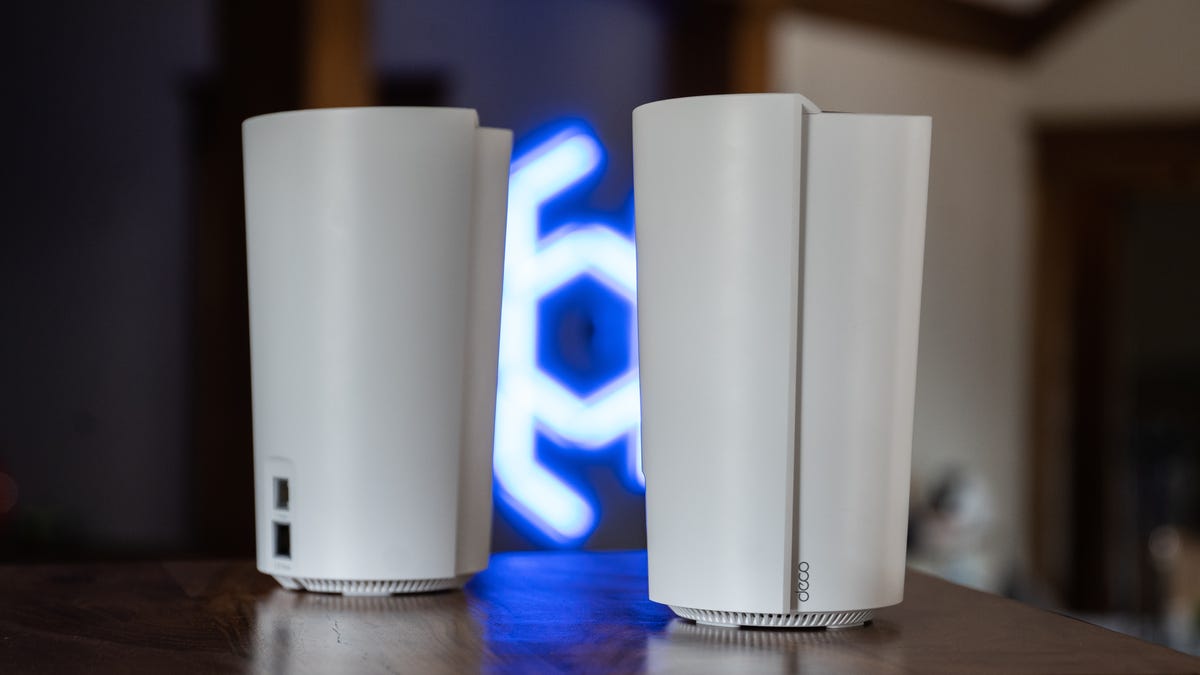Best Electric Cars and EVs for 2023

2023 Hyundai Kona Electric
Best subcompact electric SUV
2024 Kia EV9
EV we’re looking forward to the most
If you’re thinking about buying an electric car, there have never been more choices for you than there are today.
What began as a trickle of niche EVs just a few years ago has become the fastest-growing segment of the automotive industry. With the Biden-Harris administration’s plans to build 500,000 EV chargers nationwide and the tough new EPA emissions standards, we are rapidly approaching a tipping point for EV adoption and growth. More than two dozen automakers now offer 40-plus EV models, boasting at least 200 miles of range, unique high-tech features and, increasingly, performance that outclasses comparable gasoline powered models.
But there aren’t just more EVs to choose from. There’s also a wider gamut of ranges, prices, performance and luxury options, allowing prospective buyers to fine-tune their choice to meet their specific needs and budget. Whether you’re looking for basic transportation for zero-emissions commuting or a high-end technology showcase for road-tripping, there’s an EV that fits the bill.
We’ve driven just about every electric vehicle on the market in the US, so we have strong opinions on what’s good and what’s less so. We’ll start with our recommendations and follow that with a handful of tips for those buying their first EV.
The best electric vehicles on the market right now
Starting at just $28,795, the 2023 Chevrolet Bolt EUV is one of the most affordable electric cars on the road today. Larger than its sibling, the Bolt EV, this unassuming subcompact crossover rocks more interior volume than competitors — which include the Hyundai Kona Electric and Nissan Leaf — while still remaining extra compact and city-parkable. The EUV also doesn’t skimp on range; at 247 EPA-estimated miles per charge, it’s a bit more modest than our other top picks, but still offers plenty of wiggle room for commuting, running errands or regional travel.
Unfortunately, the Bolt EUV’s days are numbered. GM has announced that production is coming to an end this year with the latest reports estimating the orders closing for good in August before the final examples roll off the line in early November 2023. Once it’s gone, the next best affordable electric car will be significantly more expensive… at least until the 2025 Volvo EX30 arrives sometime in Summer 2024. Read our Chevrolet Bolt EUV review.
It’s probably no surprise to find the Tesla Model 3 near the top of a Best Electric Cars list. The small electric sedan boasts range that’s among the best in the business at 315 miles between charges in its Performance configuration, while also offering truly mind-bending acceleration. Add to that access to Tesla’s extensive and, more importantly, reliable Supercharger public charging network and the promise of constant improvement via over-the-air updates (that is, software updates to enhance performance) and it’s no wonder the Model 3 is the second-best-selling EV in America. (Numero uno is Tesla’s Model Y.)
After multiple price changes and, most recently, requalifying for the $7,500 Federal EV tax credit, the Model 3 is also more affordable than you might think, now starting at an adjusted $34,130 before any additional state-level incentives. Read our Tesla Model 3 review.
The Hyundai Ioniq 5 (and its similarly sized and spec’d cousin, the Kia EV6) offers what may be the best balance of performance, range and value on this entire list. The angular EV sits in a Goldilocks zone, boasting a healthy 303 miles of range per charge with the Long Range battery pack.
The Ioniq 5 looks compact in photos and from afar, but this midsize EV packs large car interior volume, thanks to Hyundai’s E-GMP dedicated EV platform. We found the Ioniq 5 a comfortable cruiser with a sufficient range and better looks than most other EVs. A digital key is standard, as are four USB ports on a slick sliding center console. There are plenty of active and passive safety systems on offer, including a head-up display (a transparent driver display projected onto the windshield) that rivals some luxury cars. Read our Hyundai Ioniq 5 review.
The Porsche Taycan is expensive (it’s a Porsche, after all) and its range falls short of the class-leading Tesla Model S. But there’s more to enjoying an EV than just range — driving a Taycan tells a completely different story, and we’re confident that this is the best full-size EV you can buy right now. Its real-world range is more than adequate for daily driving, and its build quality and driving dynamics are basically unassailable. In addition to the sedan profile, the Taycan is also available in Sport Turismo and Cross Turismo electric sport wagon configurations for bonus style and utility.
Porsche’s official range estimate for the Taycan GTS is 246 miles, but it’s not difficult to exceed that when driving in the real world. Plus, the Porsche’s 800-volt electric architecture charges extremely fast — capable of climbing from 10% to 80% in 23 minutes at a powerful charging station. Check out our review of the Porsche Taycan.
The Kona Electric is often overshadowed by its newer Hyundai Motor Group electric family members. Heck, aside from a unique front bumper, it’s hard to tell the compact EV from the gasoline-powered Kona. However, the Kona’s approachable $34,885 pre-incentive starting price and solid 258-mile range make it worth a second look for drivers seeking a solid full-electric ride that won’t break the bank. The tiny SUV design is great for loading up cargo, the dashboard tech checks all the right boxes, and the cabin delivers high quality for the price.
If the Hyundai has one Achilles’ heel, it’s the slower-than-average DC fast charging, which keeps us from recommending the Kona Electric to anyone looking to do a lot of long hauls. Still, the Kona’s excellent range and compact footprint makes it a good fit for urban apartment dwellers who can’t plug in every night and may need to stretch a few days of running errands between charges. Check out our review of the Hyundai Kona Electric and our preview of the next-gen 2024 Kona EV.
The Tesla Model Y is everything that EV enthusiasts love about the Tesla Model 3 with a bit more cargo space. The Y’s taller seating position, extra headroom and additional cargo capacity have made it slightly more popular than its sibling, narrowly edging out the Model 3 as the best-selling electric car in America. Heavier and with a larger aerodynamic profile than the 3, the Model Y’s can roam up to 330 miles per charge. That’s enough to stand head and shoulders above the rest of its class.
Like the smaller Model 3, the Tesla Model Y also recently regained qualification for the $7,500 federal EV tax credit, bringing its starting price to an adjusted $41,630. Read our Tesla Model Y long-term review.
The EQS SUV is an SUV version of Mercedes-Benz’s flagship EQS electric sedan. The automaker’s EV design language translates much better onto the SUV proportions, where it looks far less anonymous than the EQS sedan. Inside, the EQS SUV boasts the same high quality materials and eye-popping Hyperscreen triple-display infotainment suite.
The electric powertrain options are the same as the sedan, matching up to two electric motors with a 108.4-kWh battery for up to 536 horsepower and 633 pound-feet of torque. The SUV is larger and more spacious, which costs it a bit of range. However, thanks to its remarkable aerodynamics, the EQS SUV still delivers up to 305 miles per charge. Learn more about the Mercedes-Benz EQS SUV.
The 320-mile F-150 Lightning is one of the best modern full-size pickups that I’ve driven, electric or not. The Lightning’s utility is enhanced by its electric powertrain, freeing up space under the hood for a massive “frunk” storage space and enabling the powerful Pro Power Onboard mobile power bank system. But what really makes the F-150 Lightning so good is how much it feels like a normal Ford F-150.
The Lightning makes very few compromises to the winning formula that has made the F-Series the best-selling vehicle in America by a country mile. It’ll face serious competition when Chevrolet and Ram’s electric pickups reach the market in the coming years, but for now, Ford is the king of the hill. Check out our Ford F-150 Lightning review.
The new i7 is BMW’s flagship electric sedan, hitting the road with 536 horsepower, 549 pound-feet of torque and every gadget and gizmo in the German automaker’s arsenal. The i7 boasts up to 324 miles of electric range, features generated electric motor tones composed by Hans Zimmer and is one of the first Bimmers available with the automaker’s updated Highway Assistant, which provides Level 2 hands-free driving at speeds up to 85 mph.
Inside, you’ll find perhaps the most opulent cabin that BMW has ever assembled, with crystal controls, high quality leather and cashmere trim. If you think the dual 12.3-inch and 14.9-inch dashboard displays are huge, wait until you get a gander at the 31.3-inch 8K BMW Theater Screen that folds down from the ceiling to entertain rear seat passengers with Amazon Fire TV apps powered by 5G data. Read our BMW i7 review.
California-based EV startup Lucid takes the electric car endurance crown with its 516-mile Lucid Air Grand Touring. To accomplish this feat, Lucid stuffed its large sedan with a massive 112-kWh battery pack, but that’s only half the story. The Air also features an impressive aerodynamic design that helps it cut through the air with very little drag and compact electric motors with an efficiency of 3.8 kilowatt-hours per mile. At the other end of the spectrum, the Air’s performance is equally impressive with up to 1,050 horsepower and a 2.6-second 0-to-60 mph sprint.
Of course, it’ll cost you. The Air starts at $87,400, but the Grand Touring model tips the scales at $138,000… and that’s not even the most expensive spec. Learn more about the Lucid Air.
Kia’s EV6 is one of our favorite EVs on the road, but it only seats five. Kia’s Telluride is one of the hottest three-row SUVs you can buy today, but it’s combustion-powered. Later this year, the Korean automaker will debut the EV9, stretching the EV6’s E-GMP dedicated electric vehicle platform to accommodate a sharply styled large SUV chassis.
We’re most excited about the EV9’s reconfigurable cabin, which allows the second row to be rotated up to 180 degrees to create a social space with the third row, or swiveled outward to accommodate easier loading of car seats. The EV9 should also be quick with the dual motor GT-Line model making up to 378 hp and 442 lb.-ft. of torque and hitting 62 mph in 6 seconds flat. Learn more about the Kia EV9.
Comparison of the best electric cars for 2023
| Name | Max range (mi.) | Starting price | |
| Best affordable EV | 2023 Chevrolet Bolt EUV | 247 | $28,795 |
| Best small EV | 2023 Tesla Model 3 | 315 | $41,630 |
| Best midsize EV | 2023 Hyundai Ioniq 5 | 303 | $42,785 |
| Best large EV | 2023 Porsche Taycan | 246 | $92,550 |
| Best subcompact electric SUV | 2023 Hyundai Kona Electric | 258 | $34,885 |
| Best small electric SUV | 2023 Tesla Model Y | 330 | $49,130 |
| Best midsize electric SUV | 2023 Mercedes-Benz EQS SUV | 305 | $105,550 |
| Best electric pickup truck | 2023 Ford F-150 Lightning | 320 | $66,869 |
| Best luxury electric car | 2023 BMW i7 | 301 | $120,295 |
| Longest range electric car | 2023 Lucid Air | 516 | $87,400 |
| EV we’re looking forward to the most | 2024 Kia EV9 | TBD | TBD |
What to know before buying an EV
Deciding which EV you’re interested in is just the first step in making the switch to electric cars. Next, you’re sure to have questions about how and where to charge an EV, when and where to service it, how much it will cost to own, and what about those tax breaks you keep hearing about? These questions can seem even more daunting and complex than picking your shiny new car. Fortunately, we’re here to help.
How do you charge EVs, whether you’re at home or on the road?
The first thing you should consider when shopping for an electric vehicle — even before you start shopping — is figuring out how you’re going to charge it. The fact is that, while most EVs come with an adapter that will let you plug into any old 110-volt outlet (in the US, anyway), the size of modern EV batteries means at that voltage you could spend days waiting for a decent charge, so you’ll want to look into faster charging options.
If you own your own home, you’ll want to look into getting a Level 2 (240-volt) charger installed. Luckily, these aren’t that expensive on their own. While getting one put in does require a contractor’s services (these are dangerous voltages and currents we’re working with here), there can be tax breaks for doing so — especially if you decide to make the jump to rooftop solar at the same time.
If you don’t own your own home, you’ll be using a public charging network. You should look into which ones are the most well-established where you live and drive most often. If you have a Tesla, this is pretty easy. If you have other EVs, you’ll have to do a little research, but the most common nonproprietary networks are Electrify America, Chargepoint and EVGo. They all have different apps and pricing, but they all work more or less the same. These charging networks will offer Level 2 charging or DC fast-charging. The latter is considerably more expensive, but also much faster.
Are EVs difficult to service?
The next thing to think about is maintenance and service. With fewer moving parts and fluids to contend with and no complex tailpipe emissions hardware, EVs generally require a lot less regular service than an internal-combustion-powered car. Their regenerative braking systems mean that friction brake pads tend to last longer, their cooling systems are usually less taxed, and you can say goodbye to regular oil changes. You may think that makes access to a dealership or service department less critical for daily driving, but low-maintenance isn’t the same as no-maintenance.
EVs still require periodic service to replace consumables like the cabin air filter, wiper blades, tires, coolant and gear oil. Depending on the vehicle, you may be able to do some of this yourself — for example, topping off your tire pressure or refilling washer fluid — but for more complex maintenance there is a benefit to choosing a vehicle from an automaker with a service network you can trust — whether that be at a brick-and-mortar authorized dealer service center or, in the case of Tesla, a robust mobile service network.
What are the biggest differences between EVs and conventional gas cars?
One of the most obvious differences between EVs and ICE vehicles is how and when you put energy into it. The convenience of plugging in every evening — like you already do with your phone — and starting each day with a full battery can all but obliterate the concept of around-town range anxiety. However, even the longest-ranging EVs will require a bit of extra effort and planning for very long road trips and apartment dwellers who may not be able to charge regularly.
For the effort, EVs reward their drivers with near-silent operation. Without the drone of combustion, even modestly priced electric cars sound and feel more luxurious from the driver’s seat. Electric motors often don’t require complex transmissions and don’t have to build revs to make power. Their instant-on torque delivery results in more responsive performance and acceleration, particularly at city speeds.
One of the more intangible advantages of dedicated EVs — models built from the ground up with electric driving in mind — is that they often have more interior volume than comparable ICEs in their class. Without the need to make room for a bulky engine and transmission, designers are able to include more passenger and cargo volume without enlarging the vehicle footprint or can even include a second under-hood “frunk” storage space.
EVs tend to be more expensive to drive off the lot, but significantly lower operating costs and available incentives end up saving money for the long haul.
Do EVs cost more than other cars? Are there tax breaks for buying one?
If you only consider the initial drive-away cost, then yes. Electric vehicles are more expensive than combustion cars. They’re often loaded with the latest technology and big batteries, which drives the price up. However, the point of sale is only a small part of the equation and, over time, electric cars often work out to be less expensive than their gasoline-burning counterparts.
For starters, EVs often qualify for tax incentives aimed at easing the initial sticker shock. That can include up to $7,500 depending on the model, with additional tax breaks depending on individual states. Additionally, electricity is generally significantly less expensive than gasoline — even in states like California with higher than average per-kilowatt rates — which results in lower operating costs for every mile driven, especially when charging at home.
For example, compare the 2023 Chevrolet Bolt EUV ($28,795) with the similarly sized Chevrolet Trailblazer ($23,395) and you’ll find the EV is $5,400 more expensive. However, the Bolt qualifies for that $7,500 tax break, which earns it a net savings of $2,100 overall. The EPA estimates that Bolt owners will spend $1,200 less charging every year versus gas based on current averages. Add it all up and you’re looking at up to $8,100 in total savings over the first five years of ownership — and that’s before you factor the reduced maintenance costs.
Of course, your mileage may vary depending on your driving habits and which electric vehicle you have your eye on, but generally speaking it’s not more expensive to go electric over the long term.
Finally, be prepared to talk about your electric car. People will ask you about it — friends, family and strangers — especially if you live somewhere EVs aren’t super common yet. Some of those questions might seem silly or even dumb, but you’re going to hear them, and depending on how you answer, you might just help convince those people that an EV could work for them too.
More for people looking to keep their cars in tip-top shape
Source: CNET















